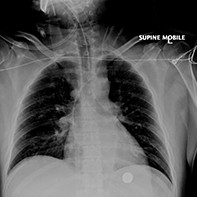Peer Reviewed
Perspectives
Extracorporeal membrane oxygenation in adults: when life support alone is just not enough
Abstract
Extracorporeal membrane oxygenation (ECMO) is a potentially life-saving rescue strategy for patients with severe, refractory respiratory and/or cardiac failure despite maximal ventilatory, pharmacological and/or mechanical support. Although used relatively widely in paediatric intensive care, its use in adults until almost a decade ago was infrequent. Technological advances and an increase in experience and understanding have resulted in improvements in outcome from ECMO support, leading to wider use of this technology in adult intensive care. There are, however, important considerations in the follow-up care of patients who have had ECMO support.
Key Points
- Extracorporeal membrane oxygenation (ECMO) is a potentially life-saving rescue strategy for patients with severe, refractory respiratory and/or cardiac failure.
- Its use in specialised critical care units is becoming more widespread as a result of improved technology and experience.
- It remains an invasive and expensive intervention and judicious patient selection is important to ensure good outcomes.
- Newer applications of ECMO include isolated carbon dioxide removal and ECMO–CPR to facilitate definitive curative intervention in appropriate patients.
- Management of potential complications and long-term sequelae is an area that is receiving increasing attention.
Purchase the PDF version of this article
Already a subscriber? Login here.

